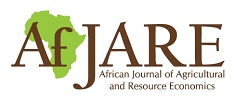Trade liberalisation in Kenya: A modelling linkage for wheat and maize
Authors: Julian Binfield, Pierre Boulanger, Tracy Davids, Hasan Dudu, Emanuele Ferrari, & Alfredo Mainar-Causapé
Abstract
Kenya has become a driving force of trade integration at the regional and continental level, albeit this process is still incomplete. Kenya was the first nation, along with Ghana, to ratify the African Continental Free Trade Area (AfCFTA) agreement in May 2018, as it was already engaged with its main trading partners. Trade policy can generate mixed effects across the economy and within the agricultural sector, reflecting differences between markets and commodities. In this paper, we argue that a mix of modeling approaches is preferable to capture the complexities of these changes. A dynamic-recursive computable general equilibrium model provides broad sectoral and macroeconomic effects, which are then incorporated into a partial equilibrium framework for a
detailed analysis at the sector level. We demonstrate this using the maize and wheat markets in Kenya as examples. Combining the output of each modeling approach allows the analysis to explicitly include certain characteristics of single markets, particularly regional trade relationships and differences in the pricing structure, that would be missed by using a single approach in isolation. It shows that further intra-African trade liberalisation will affect wheat markets more than maize in Kenya but given the low initial tariff levels, the ultimate effects will remain fairly small.
